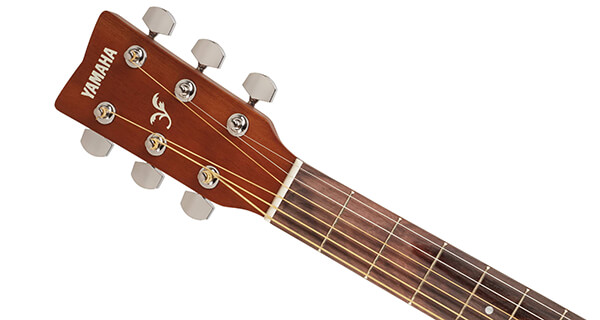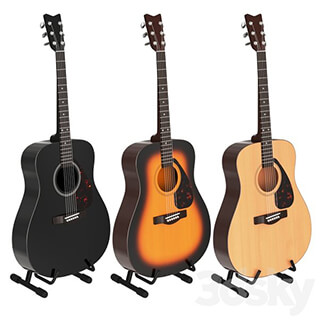Yamaha F310P Vs F310 [Difference & Which is Better]
When it comes to the world of acoustic guitars, the Yamaha F310 vs F310P stand out as two remarkable contenders in their own right. Both instruments share a common heritage but boast distinct characteristics. In this detailed exploration, we will dissect the differences and discover the similarities between these two models, guiding you towards the perfect choice, whether you’re a novice seeking to embrace the art of guitar playing or a seasoned guitarist looking to expand your collection.

# Table of Contents =>
Comparison Table:
| Features – | Yamaha F310P | Yamaha F310 |
|---|---|---|
| Body Material | Spruce top, Meranti back/sides | Spruce top, Meranti back/sides |
| Body Shape | Dreadnought | Dreadnought |
| Finish Options | Natural, Tobacco Sunburst | Natural, Tobacco Sunburst |
| Neck Material | Nato | Nato |
| Fingerboard Material | Rosewood | Rosewood |
| Scale Length | 25 inches (634 mm) | 25 inches (634 mm) |
| Number of Frets | 20 | 20 |
| Bridge Material | Rosewood | Rosewood |
| Hardware | Chrome | Chrome |
| Pickguard | Yes | No |
| Price Range (Approx.) | Moderate | Budget |
| Electronics (Pickup) | Yes (passive piezo) | No |
| Tuning Machines | Covered chrome | Covered chrome |
| Sound Quality | Good for the price | Decent for beginners |
| Ideal For | Beginners and intermediates | Beginners |
Overview of Yamaha F310P:
The Yamaha F310P, belonging to the renowned F Series, offers an affordable yet high-quality option for both beginners and intermediate players. With a classic dreadnought body shape, spruce top, and meranti wood back and sides, it presents a balanced and versatile tonal palette. The slim nato wood neck and rosewood fingerboard enhance playability, making it a fantastic choice for those seeking a dependable, budget-friendly guitar with a broad range of musical applications.
1. Body and Build –
Body Shape: The F310P features a classic dreadnought body shape, known for its balanced tone and versatility across various musical genres.

Top: The top of the F310P is crafted from spruce, a common choice for acoustic guitar tops due to its bright and clear sound.
Back and Sides: The back and sides are made from meranti wood, which contributes warmth and depth to the overall tone.
2. Neck and Fingerboard

Neck Material: The neck is constructed from nato wood and has a comfortable, slim profile, making it suitable for players of all skill levels.
Fingerboard: The fingerboard is made of rosewood, offering a smooth playing experience and durability. It has 20 frets, providing a wide tonal range.
3. Sound
The combination of spruce and meranti wood in the body produces a sound that’s crisp in the high end and warm in the low end. This versatility makes it suitable for various music styles.
Specifications:
Body Shape: Dreadnought
Top Wood: Spruce
Back and Sides Wood: Meranti
Neck Wood: Nato
Fingerboard Material: Rosewood
Number of Frets: 20
Scale Length: 25 inches
Finish: Gloss
Overview of Yamaha F310:
Another member of Yamaha’s F Series, the Yamaha F310, shares the same classic dreadnought body shape and spruce top but distinguishes itself with mahogany back and sides. This choice of tonewoods lends it a warm and mellow sound that particularly suits fingerstyle and folk music. With a nato wood neck and rosewood fingerboard mirroring the F310P’s features, this guitar offers affordability and playability in equal measure.
1. Body and Build
Body Shape: Like the F310P, the F310 also sports a dreadnought body shape, offering balanced tone and versatility.
Top: The top is made of spruce, similar to the F310P.
Back and Sides: However, the F310 differentiates itself by featuring mahogany for the back and sides, which imparts a warmer and more resonant tone compared to the F310P’s meranti wood.
2. Neck and Fingerboard
Neck Material: The neck of the F310 is constructed from nato wood, similar to the F310P, providing comfortable playability.
Fingerboard: The fingerboard is made of rosewood, ensuring a smooth playing experience, just like the F310P. It also has 20 frets.
3. Sound
The F310 is renowned for its warm and mellow sound, thanks to the mahogany back and sides. This makes it an excellent choice for fingerstyle playing and folk music.
Specifications:
Body Shape: Dreadnought
Top Wood: Spruce
Back and Sides Wood: Meranti
Neck Wood: Nato
Fingerboard Material: Rosewood
Number of Frets: 20
Scale Length: 25 inches
Finish: Satin
Main Difference Between Both Yamaha F310P Vs F310:
a) Design and Build Quality –

Both the Yamaha F310P and the Yamaha F310 feature a classic dreadnought body shape, known for its balanced tone and projection. The tops of both guitars are made from spruce, a tonewood prized for its resonance and clarity. The back and sides are constructed from meranti, which offers a warm and well-rounded tone.
One notable difference in their design is the finish. The F310P boasts a glossy finish, while the F310 has a satin finish. This contrast affects not only aesthetics but also the feel of the guitar. The glossy finish on the F310P gives it a polished and elegant appearance, but some players prefer the smooth, matte feel of the F310’s satin finish.
b) Sound Quality –
Sound quality is a important factor when choosing an acoustic guitar. Both the F310P vs F310 deliver impressive sound for their price range. But there are subtle distinctions.
The F310P’s glossy finish may contribute to a slightly brighter and more reflective sound. It tends to emphasize the higher frequencies, making it suitable for genres like folk, pop, and country. The spruce top on both models, however, ensures good projection and clarity.
On the other hand, the F310’s satin finish might result in a slightly warmer and more mellow sound. This makes it a great choice for fingerstyle playing and blues. The difference in finish can affect the resonance of the top wood, influencing the guitar’s overall tonal character.
c) Playability –
Both guitars feature a comfortable neck made from nato wood and a rosewood fingerboard with 20 frets. The scale length of 25 inches provides a standard and familiar feel for most players. The action (string height above the fretboard) is generally well-set on both models. Which is making them easy to play for beginners and comfortable for more experienced guitarists.
However, personal preferences can come into play when considering playability. Some players might prefer the smoother feel of the F310’s satin finish neck, while others may find the glossy neck of the F310P more appealing. It’s advisable to try both guitars if possible to determine which one feels more comfortable in your hands.
Which One Is Better for You?
Choosing between the Yamaha F310P and the Yamaha F310 boils down to your personal preferences and musical style:
Yamaha F310P:
- Choose this if you prefer a bright and clear sound suitable for various music styles.
- Ideal for beginners and players on a tight budget.
Yamaha F310:
- Opt for the F310 if you favor a warmer and mellow tone, great for fingerstyle and folk music.
- Also budget-friendly and suitable for beginners.
Ultimately, both guitars offer excellent value for their price range. To make the best choice, try playing both models in person to feel their differences in sound and comfort. Your decision should align with your musical tastes and budget. This is ensuring that you’ll enjoy playing your chosen Yamaha acoustic guitar for years to come.
In the Yamaha F310P vs F310 showdown, the choice ultimately depends on your personal preferences and musical style. If you’re a versatile player looking for a budget-friendly guitar with a bright and clear sound, the F310P might be your perfect match. On the other hand, if you lean towards fingerstyle or folk music and favor a guitar that delivers a warmer and mellow tone, the F310 could be your ideal companion.
Both these Yamaha models offer exceptional value for their price range and are excellent options for beginners and intermediate players. To make the final decision, consider trying both guitars in person. That is allowing your hands and ears to guide you toward the one that resonates most with your musical aspirations. Whichever you choose, you can trust that Yamaha’s legacy of quality and affordability will support your musical journey for years to come.
Last Updated on October 13, 2023 by Perry Garner


